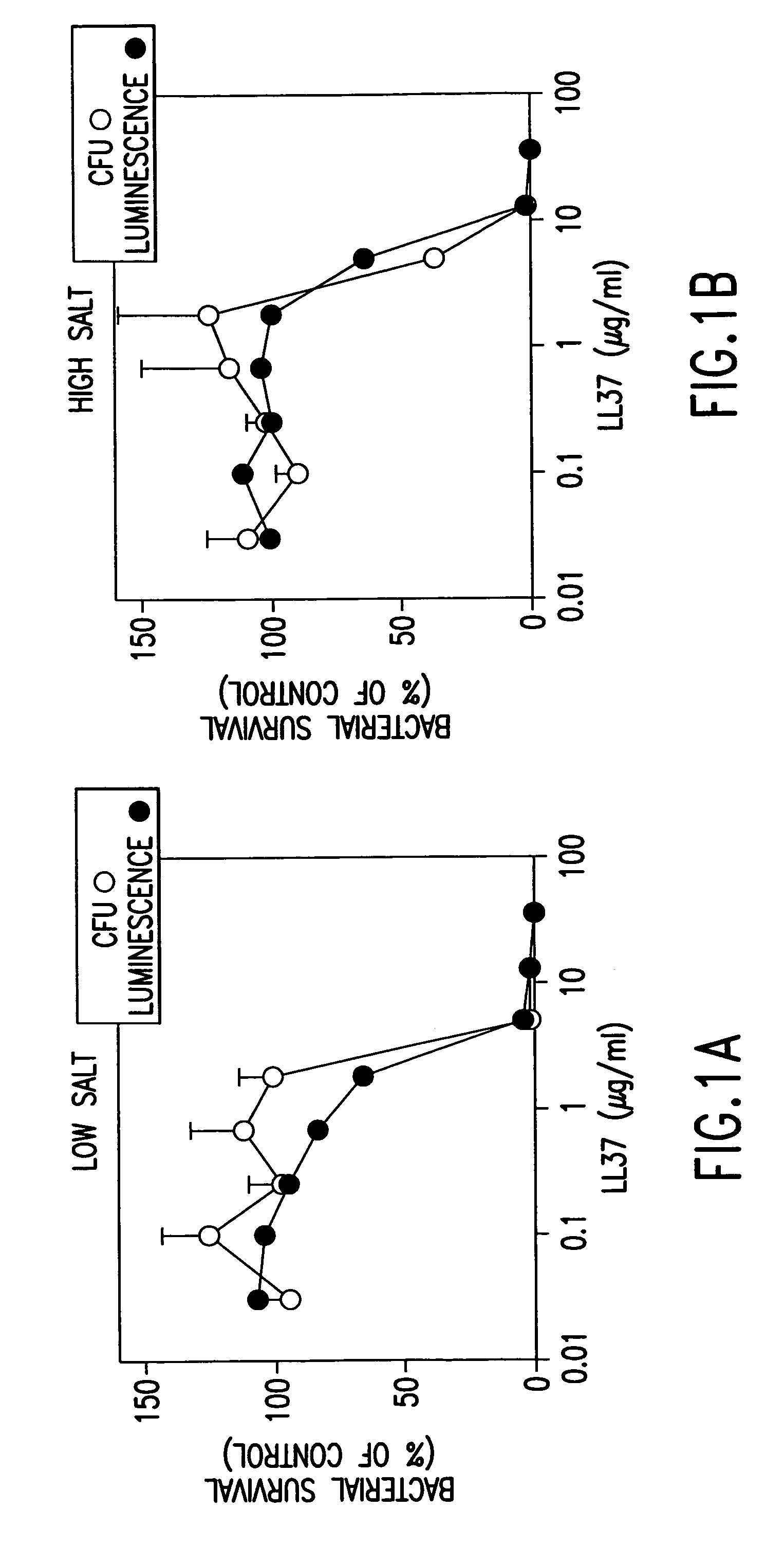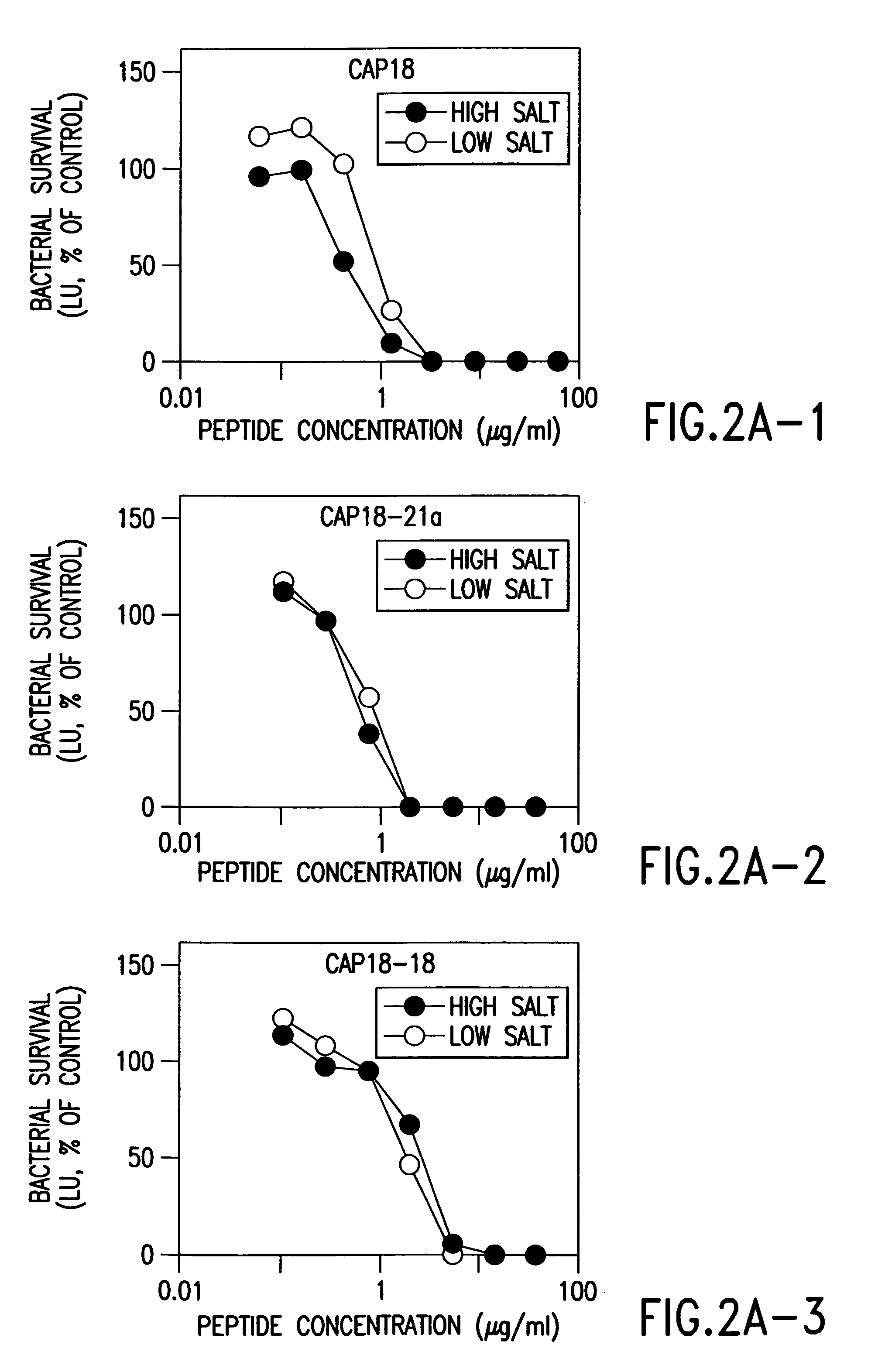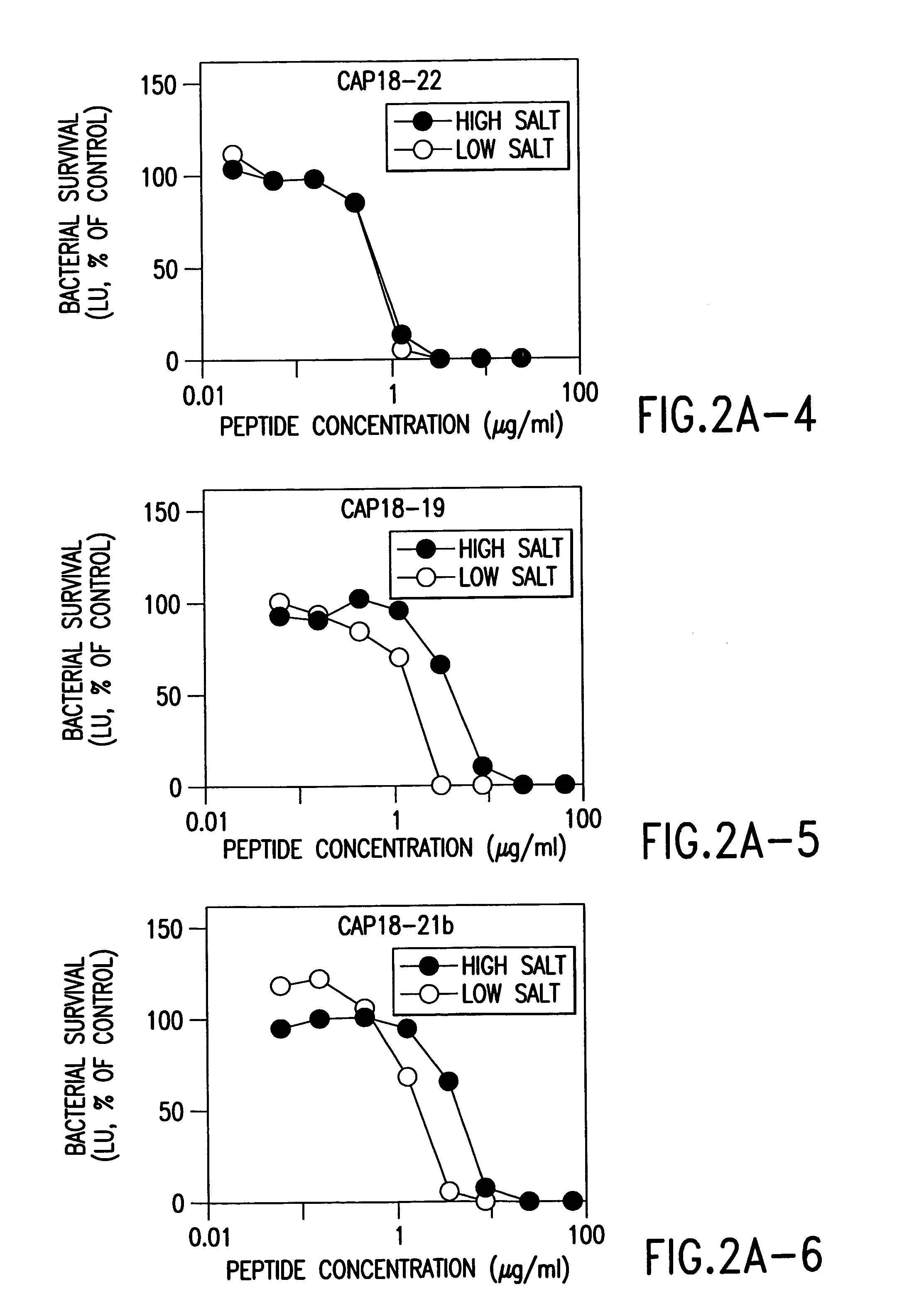Alpha helical peptides with broad spectrum antimicrobial activity that are insensitive to salt
a broad spectrum, salt-sensitive technology, applied in the field of molecular biology and microbiology, can solve the problems of fatal hospital infections, serious and life-threatening antibiotic resistance development, and the development of antibiotic resistance is a serious and life-threatening event of worldwide importance, so as to enhance the killing of microbial and/or bacterial infections, and enhance the activity of an agent
- Summary
- Abstract
- Description
- Claims
- Application Information
AI Technical Summary
Benefits of technology
Problems solved by technology
Method used
Image
Examples
example 1
Peptide Synthesis
[0198]All peptides were synthesized by the solid-phase method employing an Applied Biosystems model 433A peptide synthesizer and Fastmoc strategy at the 0.1 mM scale. Peptides were purified by reversed-phase HPLC on a Waters Delta Prep employing a Vydac 218TP1022 (22×250 mm) column. Separation was performed with a gradient system of aqueous 0.1% trifluoroacetic acid (solvent A) and 100% acetonitrile containing 0.085% trifluoroacetic acid (solvent B). A linear gradient from 0 to 100% B was applied over 70 min and fractions collected every 0.2 min. Fractions were subsequently monitored by analytical scale reversed-phase HPLC on a Beckman Gold System using a Vydac 218TP54 (4.6×250 mm) column at a flow rate of 0.5 ml / min under isocratic elution conditions. Select fractions were pooled and lyophilized; further characterization of peptides was provided by mass spectrometry and capillary electrophoresis. Mass measurements were performed by flow injection at 0.1 ml / min in 6...
example 2
Bacterial Strains and Antimicrobial Assays
[0199]We adapted a luminescence assay that we had previously used with E. coli (Singh, 1999 and Travis, 1999) to examine the time-course of killing and the potency of the peptides against P. aeruginosa PAO1 in high and low salt buffer solutions. This assay measured antimicrobial activity as a decrease in energy-dependent luminescence of bacteria containing luminescence genes. P. aeruginosa strain PAO1 was transformed with the Vibrio fischeri luminescence genes on the pBBRIMCS-5 plasmid (Frackman, 1999). P. aeruginosa was grown to early log phase (2.5×107 bacteria / ml) at 30° C. in tryptic soy broth containing 25 μg / ml gentamicin, then used without centrifugation. For each assay, 5×105 bacteria were incubated in 6.7 mM potassium phosphate, pH 7.4, 3.3% tryptic soy broth, antimicrobial peptide and other additions in a total volume of 150 μl in 96-well plates (Optiplate, Packard Instruments). After incubation at 30° C. for the indicated time, re...
example 3
CD Spectroscopy
[0203]Circular dichroism (CD) spectroscopy was performed on an AVIV 62 DS spectrometer (AVIV Associates, Lakewood, N.J.) equipped with a thermoelectric temperature control at 25 C. Samples contained 0.11–0.24 mg / mL peptide in either 50 mM sodium phosphate, pH 7.0; some samples also contained 40% trifluoroethanol or 0.1% (0.22 mM) lipopolysaccharide (LPS). LPS from a clinical isolate of Neisseria meningitidis Type B was provided by Dr. M. A. Apicella. Spectra were collected at 0.5 nm intervals with an averaging time of 2 s per datum point using a pathlength of 0.1 cm. The spectra were smoothed once over an interval of five data points prior to plotting with each spectrum representing the average of two scans. The average of two buffer scans was subtracted prior to data smoothing. The fractional helical content was calculated from the ratio of observed mean residue ellipticity to the mean residue ellipticity for a 100% helical peptide of identical length at 25° C. accor...
PUM
| Property | Measurement | Unit |
|---|---|---|
| ionic strength | aaaaa | aaaaa |
| ionic strength | aaaaa | aaaaa |
| ionic strength | aaaaa | aaaaa |
Abstract
Description
Claims
Application Information
 Login to View More
Login to View More - R&D
- Intellectual Property
- Life Sciences
- Materials
- Tech Scout
- Unparalleled Data Quality
- Higher Quality Content
- 60% Fewer Hallucinations
Browse by: Latest US Patents, China's latest patents, Technical Efficacy Thesaurus, Application Domain, Technology Topic, Popular Technical Reports.
© 2025 PatSnap. All rights reserved.Legal|Privacy policy|Modern Slavery Act Transparency Statement|Sitemap|About US| Contact US: help@patsnap.com



